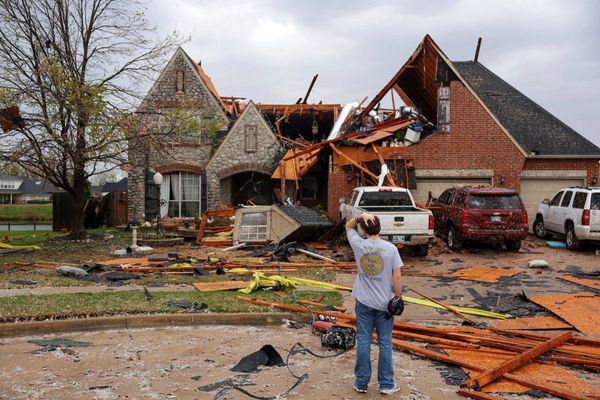
The Chicago Metropolitan Agency for Planning adopted an update Wednesday to its decades long plan to allocate federal funding for large transportation projects in northeast Illinois that aims to improve public transportation infrastructure.
But some advocates are concerned over a portion of the plan that looks to add nearly 300 miles of lanes on expressways and arterial streets instead of prioritizing public transit access in regions that desperately need it.
“We are concerned about expanding our lanes’ miles amidst a national and local safety crisis,” said David Powe, director of planning with the Active Transportation Alliance. “We should be working toward putting more people onto buses, trains and expanding bike programs and moving away from car-centric planning.”
CMAP’s move to support the expansion of some expressway and arterial lanes seeks to ease congestion on roadways, reduce work-trip travel time and lower the number of traffic fatalities per year.
But Powe said the widening of expressways and streets will only have the opposite effect.
“By CMAP approving this plan it is telling agencies such as the Illinois Department of Transportation that it is OK to adhere to the status quo and build car-centric communities when we should be supporting sustainable transit projects like rail-line extension and protected bike lanes,” Powe said.
It is a particular concern since traffic fatalities have been on the rise over the past couple years, Powe said, and expanding expressway lanes will only create what is called “induced demand.”
Induced demand is an idea that additional lanes encourage more cars on the road to fill those lanes up, which just adds to congestion and negatively impacts the environment.
“We are also concerned that these additional lanes will only increase CO2 emissions — which transportation is the number one emission in the state of Illinois already,” Powe said.
Last month, CMAP released a report indicating regional greenhouse gas emissions in northeast Illinois decreased by 9% between 2010 and 2019 but transportation emissions increased by 2%. Transportation was the only sector to see an increase in emissions during that time.
CMAP is required by federal law to develop a list of major transportation projects every four years for northeastern Illinois. The updated plan adopted on Wednesday called “On To 2050 Plan” builds on the plan first released in 2018.
It identifies significant transportation projects eligible for federal funding in Cook, Lake, DuPage, McHenry, Kane, Kendall and Will counties.
Some of those projects to widen roadways include an I-55 project through western Will County; I-57 from I-80 to the Kankakee County border; I-80 through southwestern Cook and Will counties from Ridge Road to U.S. Route 30; and adding lanes from Lake Shore Drive to I-90/I-94.
The complete list of projects is available in the plan.
The adoption of the updated plan on Wednesday went essentially unchallenged as many of these projects are desperately needed for the region and the plan includes projects to greatly expand public transit access. This includes the long-promised CTA Red Line extension, South Lakefront-Museum Campus Access improvements and expansion of some Metra lines.
But some CMAP members said there is a need to do more in creating access to public transportation — especially in counties where it is nearly nonexistent.
Abolfazl Mohammadian, a non-voting member of CMAP’s board, stressed the need for not only expanding rail lines into collar counties but also improving access to those extensions. In some places, he said, it is more of a hassle to get to public transit than it is for a person to just use their car.
Joan Smedinghoff, a spokeswoman for CMAP, said almost 90% of future funding goes toward operating and maintaining the current system. Also, about half of the projected dollars spent on transportation are for transit projects.
CMAP agrees, Smedinghoff said, on the importance of improving transportation safety and has submitted a grant application for the federal program Safe Streets and Roads for all.
“CMAP will release a suite of policy recommendations this fall designed to enable more travel by safe, active, and sustainable modes,” Smedinghoff said. “This includes a variety of ideas to invest in and solutions for our partners to implement, to raise the safety and attractiveness of walking, rolling, biking, and taking transit.
Despite the large investment into new transit projects, the addition of hundreds of miles of new lanes still causes some concern.
Dave Simmons, executive director of Ride Illinois, said he believed this updated plan will only cause more harm than good with the expressway expansion.
“When it comes to concerns about climate change, roadway safety and genuine transportation options for Chicagoland residents, businesses and visitors, the nearly 300 miles of roadway expansion included in CMAP’s regional plan will have a detrimental effect,” Simmons said. “For example, reducing the amount of vehicle miles traveled is an important factor in reducing overall traffic deaths.”







